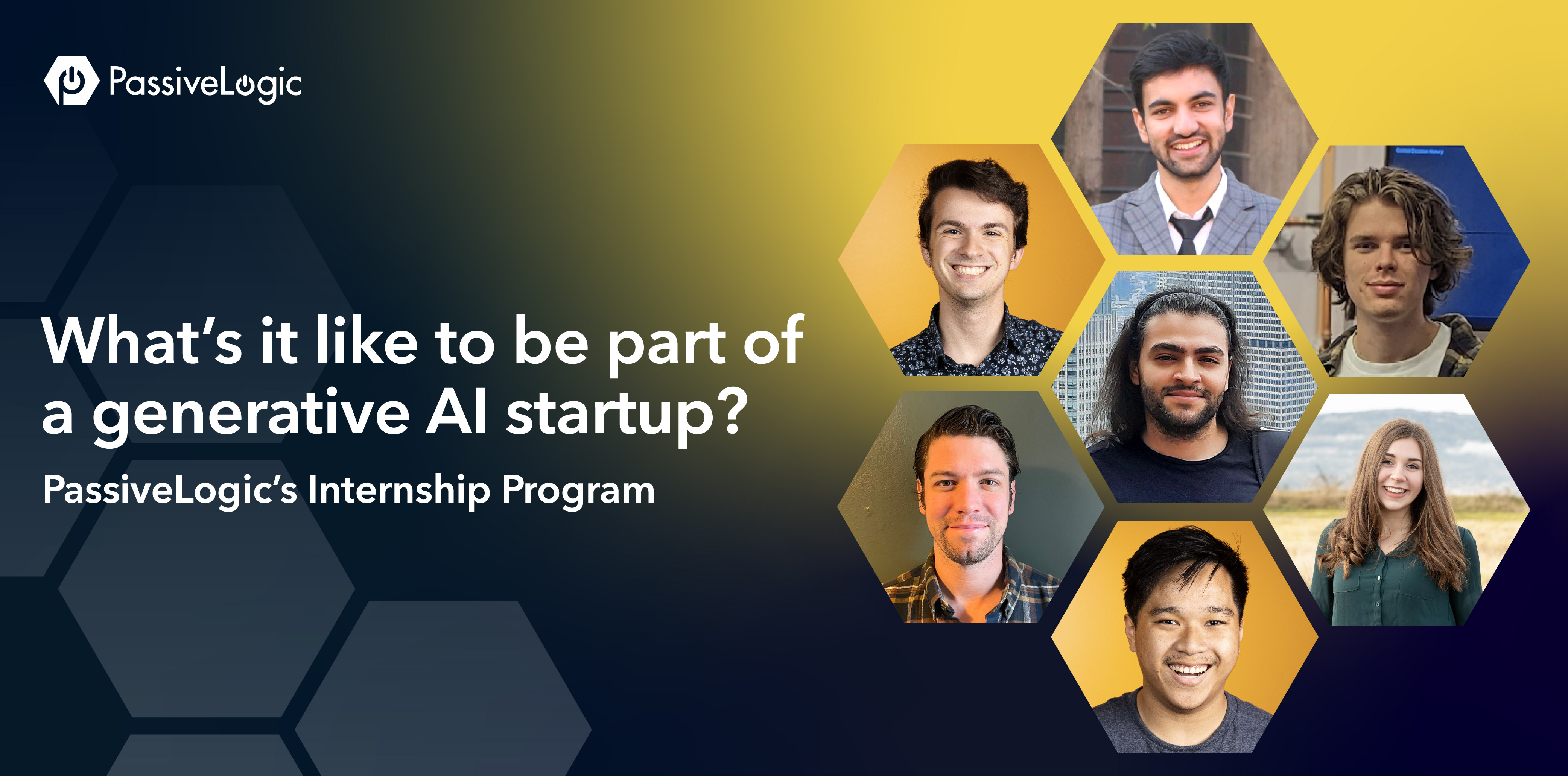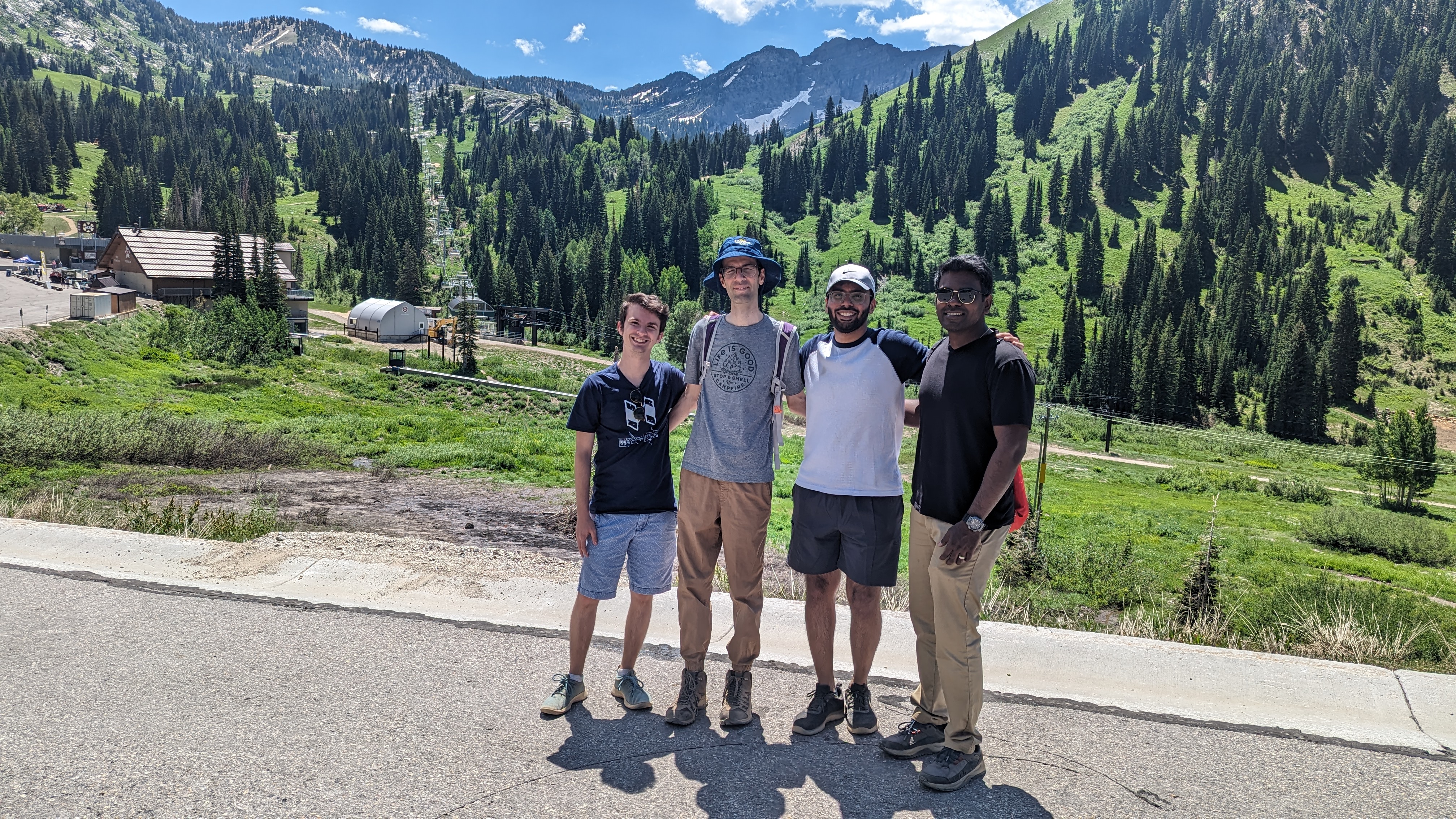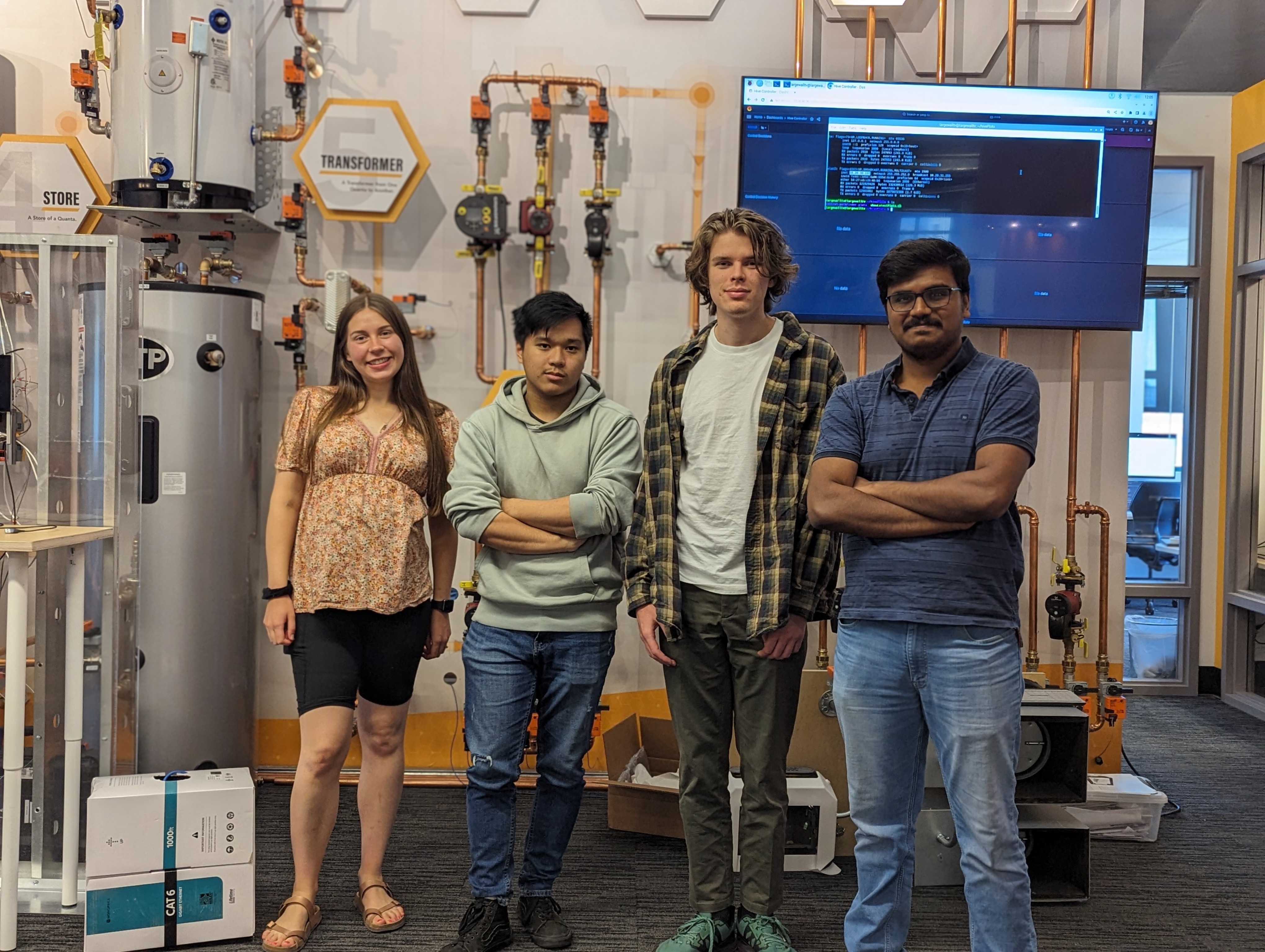
What's It Like to be Part of a Generative AI Startup?

When building an ecosystem of hardware and software products that enable generative autonomy, it’s all hands on deck. Every line of code and every unit test is a necessary piece to achieving the goals in PassiveLogic’s product architecture (the masterplan, if you will.)
Achieving this technically-intensive effort requires focused contributors who take on important projects within our architecture. PassiveLogic provides interns the opportunity to play a part in developing this technology. Below, we share insights from our latest cohort of interns and their stories about working at PassiveLogic.
Internships that Matter
PassiveLogic has developed great breadth across multiple engineering and design disciplines that enables us to build the first platform for generative autonomy. Interns work across that breadth, participating in our teams and adding to our momentum. This is made possible through identifying stretch projects for the intern that fulfill consequential work streams within our overall platform development.
For Aidan Terlizzi, finding an internship where he could get involved in impactful development work was one of the important factors while job searching. “During the COVID-19 pandemic, I taught myself how to code outside of school. Every summer I’ve been doing software engineering internships to gain experience,” said Aidan, who is in his senior year at Rice University, completing a B.S. in Chemical and Biomolecular Engineering. “It’s rare to find a company that is an amalgamation of science and software. This was perfect for me because I wanted to find an internship that would incorporate the valuable concepts I learned during my degree, as well as the software engineering skills I learned in my own time.”
Prior to his internship at PassiveLogic, Aidan created an AI tool that used natural language processing to carry out automatic edits on college essays as they were being written. At PassiveLogic, Aidan uses similar methods to build a tool that creates generative digital twins using large language models (LLM). The tool can generate a full 3D floor plan according to chat prompts such as “build a house that has on the first floor: a living room, dining room, and three bedrooms.”

Left to right: Aidan Terlizzi, Majid Karami, Bhavik Rathod, Kavin Sundarnath. J
Saugat Tripathi, our BLE Wireless Intern, found PassiveLogic’s job description intriguing as it mentioned working with “new kinds of wireless comms and algorithms.” This aligned with his M.S. in Electrical and Computer Engineering at Miami University, where his thesis focused on wireless communication, machine learning, and deep reinforcement learning for optimizing wireless comms networks using drone-based communication systems. At PassiveLogic, he currently works on BLE Mesh based algorithm development.
For Geoffrey Turbeville, getting an internship where he could exercise his skills from an extensive career in construction and his engineering educational background was a rare find. Geoffrey recently completed his Bachelors of Engineering in Mechanical Engineering at The City College of New York. At PassiveLogic, Geoffrey blends his hands-on field experience with education as an Applied Building Scientist and Field Service Technician. His unique background made him a perfect fit to traverse both roles, which involves maintaining PassiveLogic’s alpha site testing grounds and analyzing their performance.
As part of the Verification and Validation team, Geoffrey’s work is essential to getting our alpha sites/external laboratories ready for the next phase of field testing.
Developing a Continuous Learning Mindset

Left to right: Rachel Molen, An Dang, Eden Harvey, Shishir Yalburgi
We often tell our employees that “your success is only limited by your enthusiasm.” Our internships are designed to provide dedicated interns an opportunity to transition into full-time employment. We aim to set our interns up for success by instilling in them an understanding that real growth is not measured by regimented management tiers, but by continuously learning, trying new things, and perfecting your craft. In fact, being able to enthusiastically take part in uncharted territory is not just a “nice to have”, its something we’re looking for in every person who applies for a job at PassiveLogic.
Our interns hold this mindset of innovation and growth. Rachel Molen is an intern on our AI team who recently graduated with a B.S. in Applied and Computational Mathematics Emphasis and a Minor in Music at Brigham Young University. Within her first 3 months here, Rachel created a tool that visualizes optimization simulations. In a building, there are a lot of high-dimensional equations and functions going on, so Rachel’s tool visualizes those dimensions in a meaningful and clear way. “Other PassiveLogic engineers can use the tool I created to see what the cost function looks like in lower dimensions. This can be especially helpful when dealing with gradient descent parameter-tuning, as gradient descent sometimes picks local minima over global if we start the algorithm at certain coordinates or set the step-size too large.”
Mahan Tabatabaie is another intern who joined the AI team. As an Autonomous Systems Intern, Mahan’s multidisciplinary role brings AI, thermodynamics, and mechanical engineering together. While at first there was a lot to take in, Mahan credits the guided onboarding process that helped him get started. “If I had started to code from day one, I wouldn’t have a clear understanding of our project. I was given the Ecosystem Design Document so I could get up to speed. I read the whole thing, all 60 pages, and it was the perfect thing for me to get an idea of what we do, our goal, and how these products work together. It helped me to get an understanding of the big picture and what my role in that is.”
After onboarding, Mahan was able to start on his project. Mahan is currently in his 3rd year of his Ph.D in Computer Science at the University of Connecticut, focusing on driver mobility. “In my Ph.D, I analyze driver behavior, safety, and autonomous vehicles. At PassiveLogic, I was given the project to apply human mobility to the indoor positioning of people and assets within a building,” Mahan explains. This is a new dimension for Mahan, who utilizes GPS signals in his doctorate research. At PassiveLogic, he is using other signals such as WiFi or BLE, because GPS signals can’t pass through the walls of a building. “This is all new to me, but what’s interesting at PassiveLogic is that there’s a physics-based digital twin of the building which makes this problem so much easier to solve. We know exactly what the walls are made of, so we can predict how the signal passes through the wall. With this information, we can simulate exactly what would happen to the signal, and locate it more accurately.”
A Principled Approach to Engineering
Ultimately, the goal of our internship program is to instill a principled approach to engineering that sticks with all of our interns throughout all of their projects. This mindset is what sets us apart from other technology firms.
Having experience in a real work setting helped Eden Harvey to practice his own principled approach to engineering. “In school, you learn the engineering basics and apply it to a set problem that’s been designed to be solved the way you learned earlier that day. But in reality, when you’re faced with a problem, there’s not a clear path to solving it.”
Eden is a Quantum Lens Testing Intern on the Verification and Validation team, currently pursuing a B.S. in Computer Engineering at the University of Utah. “The most valuable thing I’ve learned here is reorientation of that problem-solving process. We approach problems with the widest aperture possible,” Eden explains. “If you start with a broad knowledge-gathering strategy, and narrow things down from there, you’ll be better set up to solve the problem. A big thing students run into is that they may have 10 different directions they could take a problem, and they go all the way down on one pathway.” This can result in lost time if its not the right solution. Instead, Eden spends time taking different approaches, and then narrows down the solutions to reach his goal.
An Dang has learned a similar approach. An is beginning his M.S. in Robotics at the University of Michigan, and is currently interning on our AI team. “Everything I did in my research was in a controlled setting. In a controlled setting, you can simplify a lot of things to make an idea happen. But in a real production setting, you can’t just assume that you have a magical building that adheres perfectly to what you expect, because it has to adhere to the laws of physics,” An explains. “Developing a real product for the market teaches you how to approach things that aren’t so clear cut.”
Mahan Tabatabaie agrees. “My mentor, Porter Child, helped me to see AI and software engineering with a different perspective. He taught me to develop my vision first. So I always start with considering all the possible conditions that could occur in the future. I think about the long-term design: what could happen to this product in a few months? A few years? 10 years?”
It’s important that everyone on our team, whether they’re an intern or full-time employee, is thinking of the big picture impact through every step of the development journey. We’re working hard to expand the paradigm for what is possible through engineering, so this long-term thinking has been fundamental as we release our fully autonomous platform to the market.
We’re looking for people who are committed to lifelong learning and are driven by a love of what they do. Check out our latest job openings on PassiveLogic.com/Careers.
We know there are candidates who might not fit everything outlined in a job description, or have experience and skills we haven’t considered. If that’s you, talk to us at careers@passivelogic.com.
